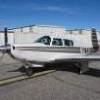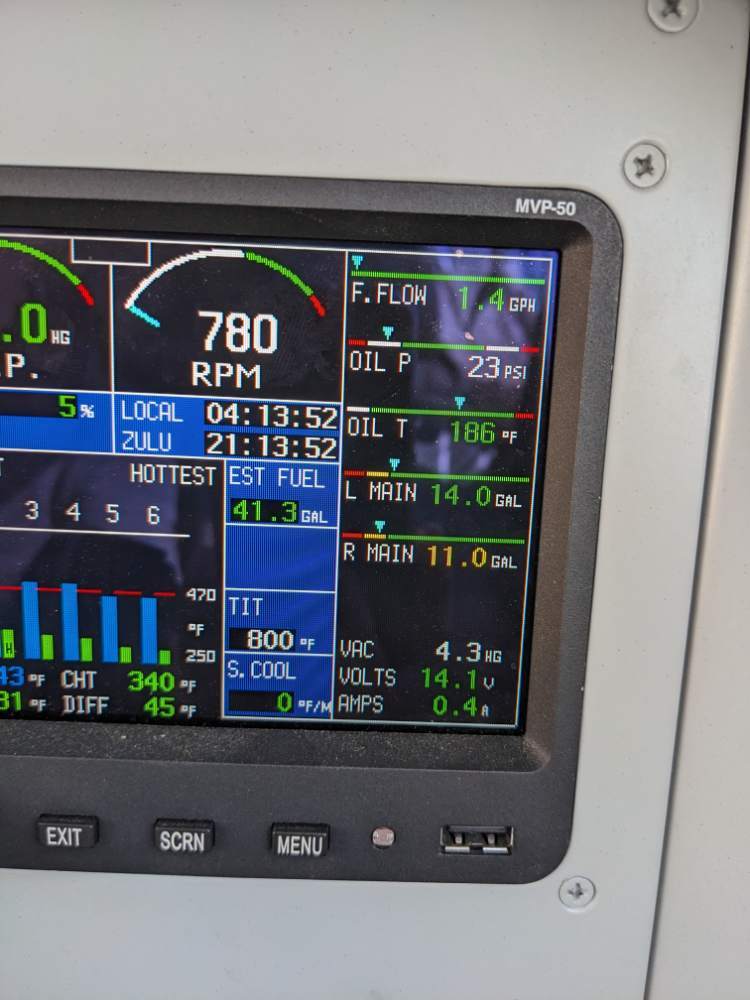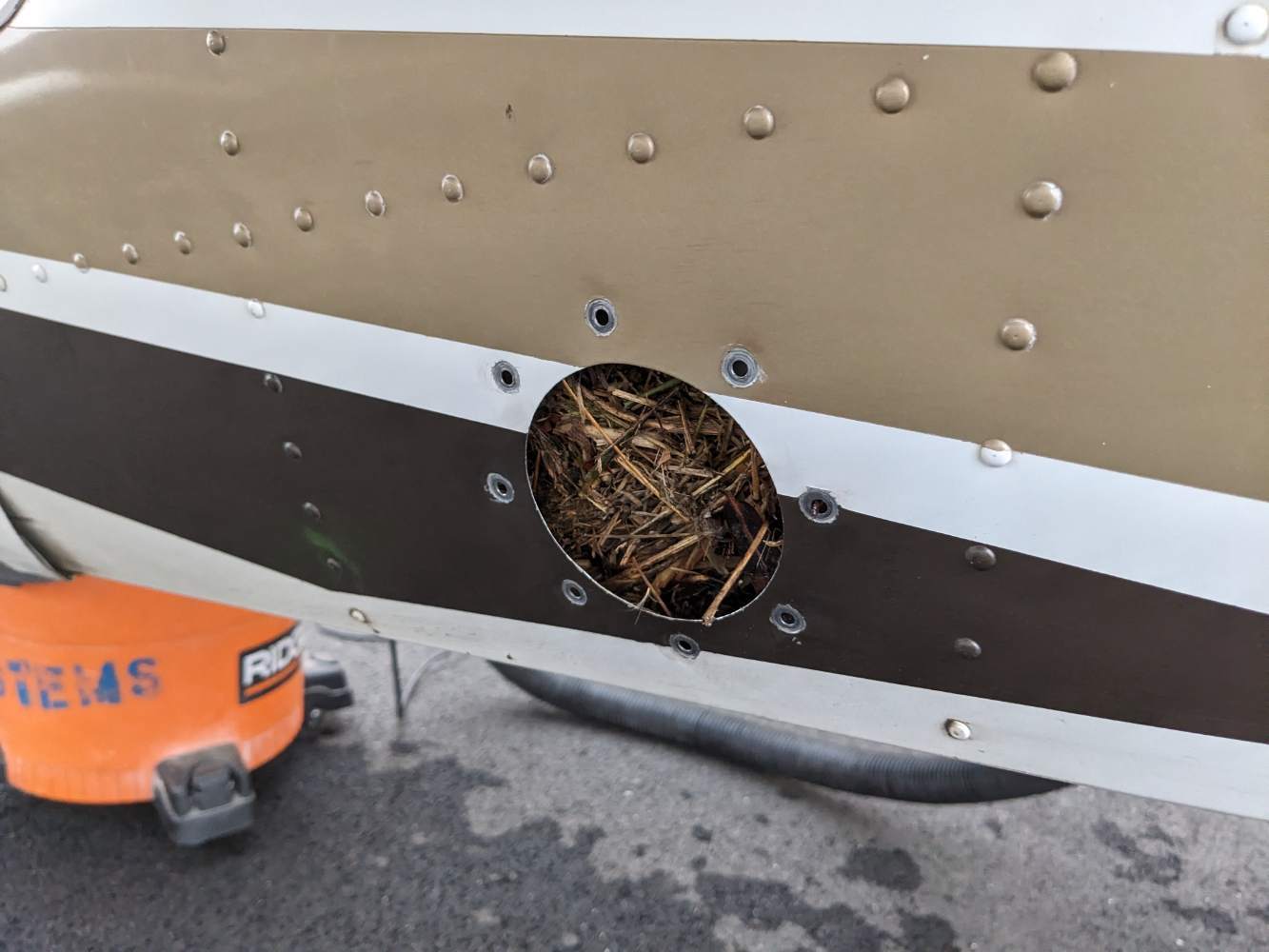-
Posts
780 -
Joined
-
Last visited
-
Days Won
4
Content Type
Profiles
Forums
Blogs
Gallery
Downloads
Media Demo
Events
Everything posted by wombat
-
On my 182 the speaker pushes the headliner down, so if I removed the speaker, I'd gain some space. I didn't know what the headliner situation in a M20C is regarding the speaker. If you took it out you might be able to shove the headliner up into that newly-empty space? Or maybe the speaker is mounted behind a piece of sheet metal? I don't know. But the comment about the space it takes up was really a stand-in for any factor that makes a thing less desirable. Maybe it takes up space, maybe it takes time to preflight or maintain, maybe it just adds weight or expense.
-
@A64Pilot I'm right there with you on the questions regarding what to keep and what to toss... On my new to me plane, I've got manuals for equipment that was removed to be replaced by something that was then later removed to make way for the current generation of equipment, which happened 11 years ago. What I've decided is that I'll keep all that old junk (aforementioned avionics manuals, engine logbooks for engines that were replaced, etc) but keep it separated from the maintenance records. It doesn't hurt me to have a giant box of old stuff, and maybe someone who ends up buying the plane will want this old paperwork. But I'm not even bothering to put it in chronological order. It's just all jumbled together. @Mcstealth There is also the question of what makes something 'damage history'.... If as a completely random example, someone were to run my plane off the side of a runway and a bush tears one of the gear doors off, does that count? What about if the damage is exclusively on the gear door itself and they replace it? There is no damaged part on the plane. What about if the plane regularly lands on grass and after 5 years of this the A&P says "The gear door attach holes are worn out, we need to get a new gear door."... Is that damage history? Personally I'd call any single event that requires a 337 to repair 'damage history', but that's just me personally.
-
Everything can fail. What the cost of and success rate is of a backup or convenience of having the thing compared to your personal budget for cost (Including weight and complexity) and risk of the various outcomes plus any legal requirements dictate if you need a backup of a thing. Do you personally value the extra 3/4" (or whatever it is) of cabin height that the speaker consumes, and/or the weight penalty and extra wiring and potential for failure a lot? Or do you place a higher value on the convenience of being able to listen to the radio prior to putting your headset on, or having a different way to listen to radios if your audio system has some relatively specific types of failures? If there is no legal requirement, then you get to decide! What fun! When I'm feeling risk-averse, I won't fly anything with less than 17 engines where each engine has it's own parachute plus a backup parachute. But sometimes I am willing to accept risk and I'll just go fly with only the left wing and one prop blade, because I just can't deal with the performance hit of all that drag. More seriously, if there is no requirement one way or the other, then do whatever you think is best!
-
I don't know how all of the rest of you are filling the tanks, but when I've filled the plane with long range tanks, (I've done it twice now total in my life!! hahaha) I take both fuel caps off of one side, fill one of them, then immediately go and fill the other, then go back to the first. I don't see how that could possibly leave room for 4.5 gallons per side more because of fuel moving between the tanks. There is maybe 15 seconds between filling one and then the other. The second time I did this, after filling both tanks fully (going A->B->A) I then set the fuel nozzle down and gave the plane a good shake and was able to get roughly another gallon in, but I couldn't see the fuel meter from the plane so I don't know exactly how much more I got. But when I shook the plane again after that, the fuel level didn't seem to change in either tank.
-
Yum, Nutella!!!! I have nothing worthwhile to add to the conversation. But I do like nutella.
-
I'd love to go, but I'm too busy for pretty much everything this spring.
-
I'm considering replacing the fuel senders in the plane. Does anyone know if this should be done before having the fuel tanks resealed? i.e. Is there any fuel tank sealant over the fuel senders? If I'm spending the money to have the 'best' tank sealers do their work, I don't want to break through that seal shortly after.
-
@Fly Boomer Yes, that was intended to be part of my "In a perfect world" statement about how I wish it worked.
-
Just got off the phone with EI. For fuel gauge calibration the MVP-50 has 4 or 5 calibration points with what I'm assuming is linear interpolation between them. They are user-settable, so I can set them to whatever I want. I will probably set them to read however much is in the tanks when the travel is at the full upper limit, and of course empty, and pick two spots in the middle where the it will have good linear interpolation between them. The engine percentage power is configurable too, so I can fix that too. @midlifeflyer I can set my fuel totalizer to be 105 gallons, even though the gauges will only read a maximum of 72 gallons total, so it's not quite the same problem you have on the Diamond. EI sells the EI P-300M magnetic float sensor. Much cheaper than the CIES ones (< $500 each instead of $1,100 each). So I wonder if I should do this now since the fuel tanks will be getting resealed next month anyway.... But the current ones seem to work just fine. Hmm.... If it was just the $1,000 I'd probably do it, but it's also going to be a bunch of labor to drain, remove, then re-install the sensors. Hmmm....
-
I'm going to call EI today and ask about this.
-
Yes, those are my questions too. Additionally, since the fuel senders are in the main tanks, I think there will be significant fuel added after they are full but before the monroy long range tanks are full. After the last fill-up, I set the MVP-50 to 104 gallons. The official 'book' capacity is 105. At this point after one flight since then, the 'fuel remaining' and the fuel gauges are significantly different. 41 Gallons for fuel remaining (from the fuel totalizer) vs 25 for the gauges. In a perfect world, the gauges would read correct on empty, and for all fuel added until the fuel senders reach their 'full' limit, even though that is not actually full fuel. However much they read when they hit their limit of travel is what they would read for any actual quantity of fuel above that. Or if there is a way to make it say "At least XX gallons" If I fill the tanks to completely full, the gauges would start by reading a value less than 105 total and would stay there until I consume enough fuel to let the senders start moving. Then they would be accurate down to 0 gallons. So right now I don't know how much fuel I have. If I lost a lot of fuel that didn't go into the engine, the fuel gauges might be right. But I won't know until I fill the plane all the way back up. And I don't want to do that because I'll be dripping fuel.
-
That makes a bunch of sense.... Occasionally having the prop creating drag instead of thrust, and having the torque be backwards as the air is driving the engine speed faster than the engine power would actually make it go is probably OK but it wears the bearings (and maybe other parts) quickly. So if you regularly do this on a descent from FL230 it'll cause the engine to need maintenance early but if you only do it on final the bearings will outlast the normal expected life of the engine before overhaul.
-
I'm only 4 flights into my Rocket ownership and am finding that I sometimes want to fly at much lower power settings than even the lowest cruise setting in the manual. The manual does say not to go below 25" & 2,200 RPM on the descent so I've been using that as my minimum power for everything other than final approach. This results in being way too fast in the pattern of course. The "IFR By The Numbers" configuration sheet includes a 15" and a 20" power setting so I assume those are relatively safe. My specific questions are: What is the purpose of the 'minimum descent power' and if I go below that (as long as I reduce power by no more than 1" per minute), will that cause any damage? What do other pilots use for power settings in the traffic pattern and on final?
-
On the new-to-me Mooney Rocket, I'm noticing that the fuel gauges show gallons, and read about 36 Gallons per side when completely full. I've got the Monroy long range tanks, so I'd expect full to be 52.5. When I was flying, they seemed to decrease at about the rate of fuel burn (20 GPH). But they are starting at a total of 72 Gallons, so when the fuel burn shows I should have 41 Gallons left, the gauges are showing I've only got about 25. I don't know if the fuel is leaking out that fast or if the gauges are miscalibrated. Guess I'll know more the next time I fuel it up, since I now have a record of what the gauges and the 'fuel remaining' from the flow meter say after having it topped off to start.
-

Anybody want to help me change a tire in Manassas?
wombat replied to wombat's topic in General Mooney Talk
These things were not present until after I bought the plane. Bad luck for me. The tire was fine during the prebuy. I even went in a flight in the plane. But when I went to fly it on Saturday, the air came out immediately, it wouldn't even start to lift the nose. And the bird nest and eggs were all from the last week that it sat outside; all of the grass and stuff that made up the nest was brand new. Stupid busy bird. -

Anybody want to help me change a tire in Manassas?
wombat replied to wombat's topic in General Mooney Talk
Everything worked out well enough today and I made it back to Iowa today from Manassas. Brutal headwinds and anything less than 10,500 MSL was incredibly rough. Diverted to an airport that had a runway that was more lined up with the winds. I didn't think I was ready to land this plane with a crosswind component over 25 KT. And METAR when I finally landed: KOTM 012253Z AUTO 31017G36KT 10SM CLR 15/M04 A2969 RMK AO2 PK WND 31038/2218 SLP055 T01501039 -
Kind of funny. I meet the requirements to give him transition training. But I'm not comfortable enough in a Mooney right now to go fly my own plane without receiving transition training myself.
-

Anybody want to help me change a tire in Manassas?
wombat replied to wombat's topic in General Mooney Talk
This 90 degree stem fits correctly, a straight one would not. I'll get a picture tomorrow morning. -
On FlightAware, you can look at the track log and it has the exact time and position data. ForeFlight does as well, so you can just cut-n-paste them into a single spreadsheet and insert empty cells as necessary for the times to line up. If I set the time correctly in my engine monitor, that would be even easier. But it's off by a little so I had to shift it manually too Oh, and this data is for a brand C aircraft. It's just to demonstrate that the analysis can be done
-
@Shadrach check out my spreadsheet that uses both ForeFlight and ADS-B data to calculate fuel economy. It could do climbs too, but I wasn't really paying attention to that at that time. https://docs.google.com/spreadsheets/d/1ixfZQPAsKIh59g-zvnmV05KYbNdMHMJ3dWYyBAGOaMM/edit?usp=sharing
-

Anybody want to help me change a tire in Manassas?
wombat replied to wombat's topic in General Mooney Talk
Tire is fixed. It was a pinch flat between the two halves of the wheel. Flying with Jerry H tomorrow (I hope) in some winds that are honestly 'sporty' for my first time back in the Mooney cockpit. We also got the bird nest out and rinsed the area with water. -

Anybody want to help me change a tire in Manassas?
wombat replied to wombat's topic in General Mooney Talk
Thanks for the offer, @jetdriven, @Shadrach has a tube too and he's planning on bringing it down on Monday morning. The shop here I was using for the prebuy will be able to install it, or we'll be able to do it ourselves, but for other reasons, I think the shop will be willing to do the install at a steeply discounted price. -

Anybody want to help me change a tire in Manassas?
wombat replied to wombat's topic in General Mooney Talk
Unfortunately it'll take more than just air. I found a helpful nearby RV builder who had a 2.5 gallon tank, and the air came hissing out as soon as I put it in. I don't see a puncture or anything, so I don't know what's actually wrong. Edit: I don't actually know if this tire has a tube or not. It might inflate if I just got the nose lifted to let the tire set back on its bead. -
Trying to pick up my new plane (N5773S) but the nose tire is totally flat. All the shops are closed. Anyone have a 5.00 x 5 tube and tools that is looking for something to do? If not, I'll stay at the hotel a few nights and get it fixed on Monday.
-
My guess is you have some wire that has a resonant frequency with your cruise engine RPM. Next guess is that at cruise speed and configuration you have airflow pushing wires around in the cowling. So maybe try to cruise at a different RPM or different airspeed or configuration.








